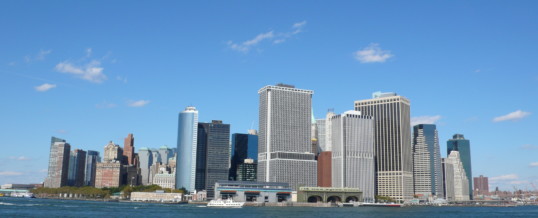
Through data collected by the Department of State of New York, we learn that 6,800 jobs were created in the financial sector between February and May of this year.
As we know, this is the industry that drives New York City (and the rest of the economy I should say). The forecasts were bleaker than reality, the unemployment rate in the financial industry stopped rising and inverted its course before most analysts expected.
Mansion Tax
This infamous tax, equal to one percent of the value of the piece of real estate, was introduced in 1989 by Governor Mario Cuomo; it is levied when a property over $1 million is sold.
In your opinion: who, between the buyer and the seller, usually wants to pay it? You are right! No one.
In many instances nowadays, given the market situation (favorable to the buyer), developers of new constructions are offering the buyers to pay the mansion tax as an incentive since it can really be a deal breaker. Through this way the developers can keep the closing price higher on the Department of Finance registers, which is good for the project.
But if it is a resale from a private owner, sometimes the struggle with rationality is more challenging. People can be become emotional about who is supposed to pay this tax and throw deals down the toilet as a result.
My suggestion: be patient, get a therapist (almost everybody does in NYC), do physical exercise to let the anger out and eventually negotiate a compromise as a solution.
The result is that sellers and their brokers tend to price apartments in order to possibly close under the mansion tax threshold.
The numbers collected by the firm Miller Samuel show it clearly: between 2005 and 2010 there were 1755 sales of Manhattan properties between $975,000 and just under $1,000,000 while in the same period the number of properties that sold in the range $1,000,000 to $1,025,000 was 311.
Adam Pincus from The Real Deal relates that experts of the commercial leasing sector are fairly happy lately since activity has been OK in the past months.
Case in point: a clothing company is interested in 500,000 SF of space in the Empire State Building.
Even the Downtown area, the most troubled by vacant space, has registered a monthly net leased space increase between June and July that is the most relevant of the past 3 years.
I mentioned in a previous article how buyers’ opinions and feedback can influence developers in modifying floor plans even after construction has terminated.
Another good use of the attentive eye of the potential buyer is watching the on-line listings.
Brokers sometimes utilize the same listing photographs if, for instance, they are selling a new project and they are marketing several units of the same floor plan that basically look identical (the floor is the only variable). This is generally accepted by the public.
If this happens with resale units that are not identical: we have a problem. Customers can get really upset and post terrible public comments on the websites where they find these inconsistencies even if it was just an honest mistake by the broker or her technology partner who was the one uploading the photos online.
Be patient citizens; it will lengthen your life :)
The truth is that I witness daily the high level of professionalism in the NYC real estate community, and I can tell you I am proud of being part of this efficient market.
Sure, there’s always a rotten apple here and there; even in the Big Apple.
Bad news for NYC developers is good news for buyers and investors in the finished product.
True, it is a very rough time for people in construction. Few permits for new projects have been issued this year and even less have started breaking ground. Contractors, for the most part, are used to bidding on contracts below cost since they know that cost overruns will inevitably happen and therefore they will be able to make a profit.
These are procedural problems that are added to the scarcity of demand in the present period.
What are the thoughts that come to my mind on the fact that not much is being built in NYC right now?
Manhattan, for example, is an island where space is, by definition, limited and where there is a normal tendency to have many more buildings that are “old” (not new constructions or full renovations) compared to the new inventory. Almost everybody tends to prefer the new product; which, if that is the case, will be way more attractive to buyers, in say 5 years, if the owner wishes to sell for whatever reason. Plus, the new product is currently priced very competitively (in other words: cheap). These prices will not last for a long time. In fact, I personally notice a trend towards new construction inventory shrinking and I believe a substantial appreciation of real estate values will happen faster than many expect.
Another data which shows a good sign of activity is the one reported by Paul Massey, founder of Massey Knakal, a firm that focuses on brokering small to medium sized buildings in the City.
Paul says to the magazine The Real Deal: “During the first half of 2010 there were 230 Manhattan building sales, up 87 percent from the first half of 2009, but still down 61 percent from the peak of the first half of 2007.”
This is it for today.
As always, I am available to answer any question regarding your next investment in the New York City Real Estate market.
Warm Regards,
Riccardo Ravasini
SEP
2010


